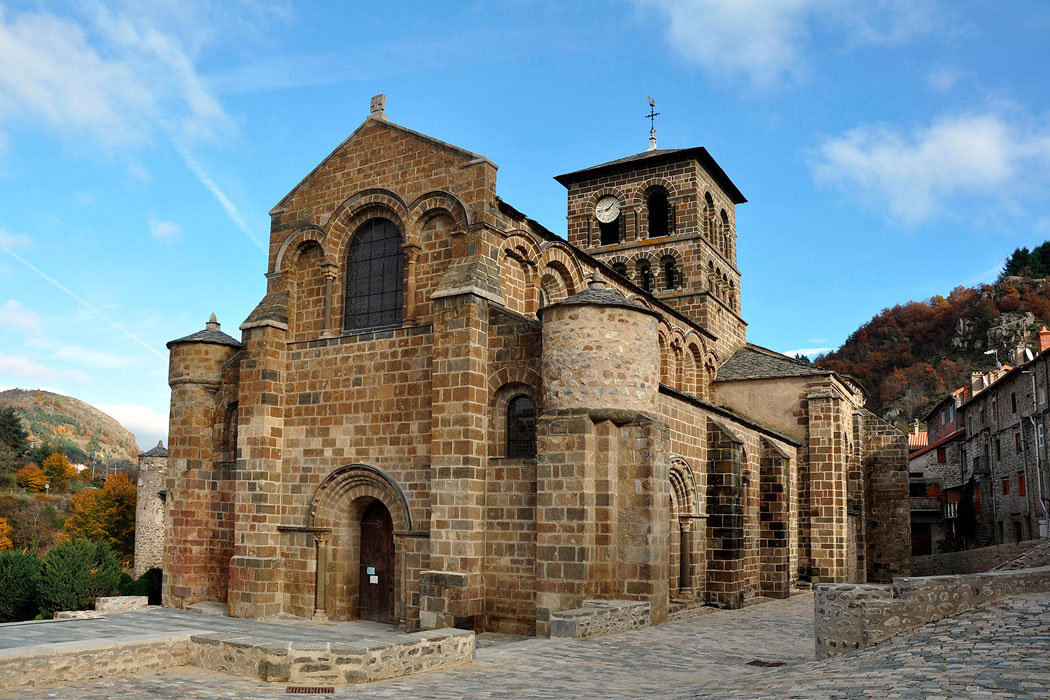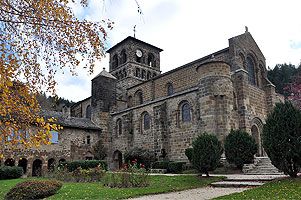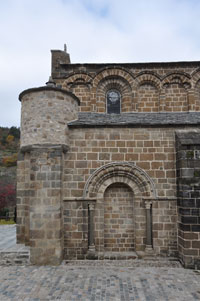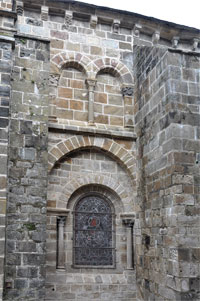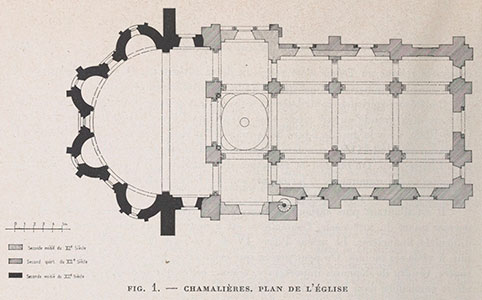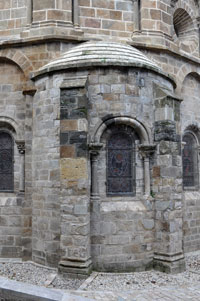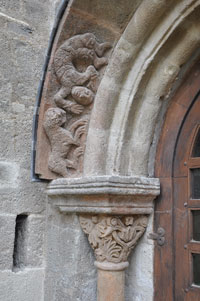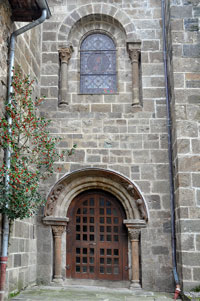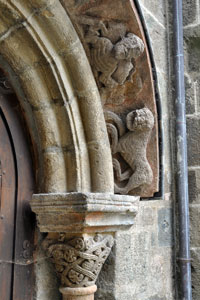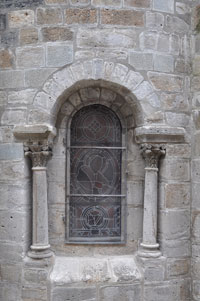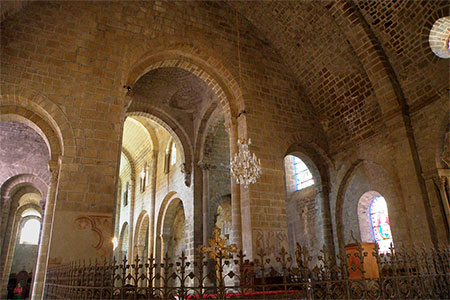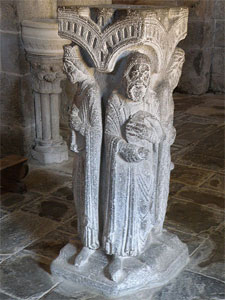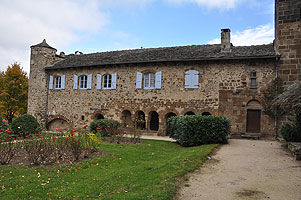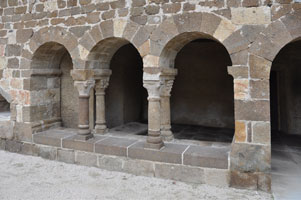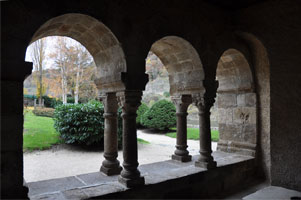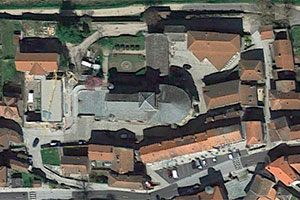Around the year 927, the site of Chamalières was donated by Acfred I, Duke of Aquitaine († 927), to the bishopric of Le Puy. Ten years later, Bishop Godescalc († 962), former abbot of Saint-Chaffre (Haute-Loire), transferred it to that abbey, which at the time was being reformed with monks from Saint-Géraud of Aurillac (Cantal). One of these monks was Dalmas of Beaumont, who played a key role in the foundation of this priory.
Around 933, Dalmas, a former monk of Aurillac, was sent to reform the abbey of Saint-Gilles (Gard). According to tradition, when he returned to Auvergne, he brought back some relics of Saint Gilles and the Holy Nail (Saint Clavel), which were venerated there. The foundation of the priory would have taken place in 937. Dalmas of Beaumont was the first prior of Chamalières, until 946, a monastic establishment that had its origins in a church dedicated to the Virgin Mary, later placed under the patronage of Saint-Gilles.
The possession of relics of Saint Gilles, together with the Holy Nail —considered to have been a gift from Charlemagne—, made the site a center of devotion and pilgrimage, while also attracting significant donations from the nobility. In the following years, the priory accumulated a substantial set of properties and dependent churches. By the mid-11th century, a women’s monastery linked to it is mentioned at Chamalières, which disappeared in the 17th century. It also had dependent priories, such as Roche-en-Régnier and Confolent. In 1381, in the context of the Hundred Years’ War, it was fortified.
The last regular prior was Odon du Bois, in the late 15th century. During his tenure, Chamalières was struck by a flood caused by the overflowing of the Loire. In 1487, Claude-Armand, viscount of Polignac, donated a reliquary to preserve the Holy Nail. The first commendatory prior was Antoine de Flaghac, in the early 16th century. From that time, decline set in. The last prior was Charles-Borromée de Laval, appointed in 1770. With the Revolution, the priory was suppressed, its assets sold, though the church remained public property.
The remarkable Romanesque church of the priory is still preserved, the result of successive construction phases in the 11th and 12th centuries, later reinforced in the 14th century and restored in the 19th. It is a three-aisled building with a short transept, dating from the 11th century. This connects to a wide semicircular chevet with four radial apsidioles, added in the 12th century. Sculptural elements from different structures are also preserved. To the north of the church was the cloister, now lost, and the annex buildings, of which an 18th-century structure with remains of the chapter house survives.
- BEIGBEDER, Olivier (1962). Forez-Velay roman. La nuit des temps, 15. Zodiaque
- CHASSAING, Augustin (1895). Cartulaire de Chamalières-sur-Loire en Velay : prieuré conventuel dépendant de l'abbaye de Saint-Chaffre. París: Picard
- DURLIAT, Marcel (1976). Le prieuré de Chamalières. Congrès archéologique de France, 188 ss. Velay. Société française d'archéologie
- KLOUTZ, Nicole (1973). La seigneurie du prieuré de Chamalières (Xe siècle-XIIIe siècle). Cahiers de la Haute-Loire, Le Puy-en-Velay
- PONTVIANNE, Régis (1904). Le prieuré conventuel de Chamalières-sur-Loire, ordre de Saint-Benoit, observance de Cluny, dépendant de l'Abbaye du Monastier-Saint-Chaffre (937-1790). Le Puy: L’Avenir
